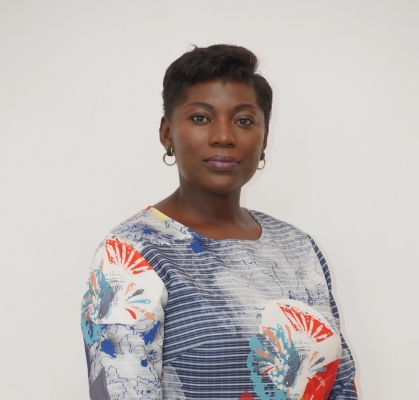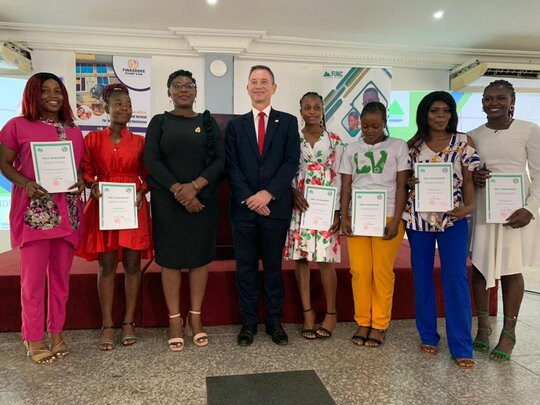
FUNIC Cameroon revolutionizes the way Cameroonians learn!
Etta |
Learning is a process which includes acquiring new or modifying existing knowledge, behaviors, skills, values, and performance. Learning is a process which includes acquiring new or modifying existing knowledge, behaviors, skills, values, and performance. Many researchers in the field have said people usually learn through play, experience, and various forms of social interactions. Extensive research has led to the description of seven learning styles.Following are the Seven Learning Styles:
- Visual (spatial): Learner prefers using pictures, images, and spatial understanding.
- Aural (auditory-musical): Learner prefers using sound and music.
- Verbal (linguistic): Learner prefers using words, both in speech and writing.
- Physical (kinesthetic): Learner prefers using body, hands and sense of touch.
- Logical (mathematical): Learner prefers using logic, reasoning and systems.
- Social (interpersonal): Learner prefers to learn in groups or with other people.
- Solitary (intrapersonal): Learner prefers to work alone and use self-study.
During a meeting to announce a new learning model designed to train students of her Institution, the Founder of Fotabe University, Fotabe Elmine said:
“Many pundits on the subject have advised that learners who identify their preferred learning style are more successful. Yet, I strongly believe that combining multiple learning styles is absolutely what learners need to be successful in the ever more competitive 21st century business environment.”
Until very recently, educators had not recognized this approach. Traditional schooling used (and continues to use) mainly linguistic and logical teaching methods. Many have said that this method also uses a limited range of learning and teaching techniques. It isn’t uncommon to see that many schools, even the ones that are supposedly professional schools still rely on classroom and book-based teaching, much repetition, and pressured exams for reinforcement and review.
Many teachers often label those who use these learning styles and techniques as bright, while they consider those who do not as average. All this approach does is create positive and negative spirals that reinforce the belief that one is "smart" or "dumb".
Some professional institutions that have tried to move away from this approach still end up with what Fotabe Elmine calls the:
Classroom-Workspace-Workplace Approach.
In the classroom, students are taught to define concepts, identify processes and tools.
In the workspace, students see. They see processes, and how tools are put into use.
In the workplace, students learn the realities of working. They learn, they fail, and they grow.
While this approach has improved how people learn, it hasn’t solved the issue of poor performance at work and in life after school.
“After thinking hard and long about the question of why Economic Development in Cameroon is slow even with a highly literate population, I decided to modify the way students learn at Fotabe University. I call this new learning approach- moTor. This is my idea of the “engine” of economic growth in Cameroon.” Fotabe Elmine said.
FUNIC’s moTor learning approach: Workspace-classroom-workplace
The motor learning method is one of the key highlights of the FUNHIC experience at all levels. The motor learning method is an educational innovation that exposes learners to the business models and challenges of successful companies, governments, nonprofits, and social enterprises in their environment. It combines the seven learning styles and is comprised of the intricacies of Business cases, the originality of local business models, and the challenge of strategy reinvention.
Explaining her learning method to her team, Fotabe Elmine said:
“Instead of the traditional method of teaching students concepts in the classroom before sending them on internships to observe how work is done, then going into a workplace where they actually start doing work, I have developed another approach.”
Our students go to the workspace where they observe how our local entrepreneurs and business people make money, how they create value for customers and how they build successful entrepreneurs and intrapreneurs. After this phase, they go to the classroom prepared to have meaningful conversations about local business models, case studies, problems, and propose well informed solutions.
The learning doesn’t end there. No! After the classroom interactions, and armed with both workspace and classroom experience, these students enter the workplace, ready to start contributing from day one as either highly motivated intrapreneurs or well prepared entrepreneurs! This approach leads to understanding local business models, problem solving, and critical thinking.
The president of FUNIC has also emphasized that in addition, the following benefits are also enjoyed by students:
- They acquire practical skills
- They develop communication abilities
- They acquire problem-solving abilities
- They develop critical thinking abilities
- They learn design-thinking
- Local companies are put in the spotlight.
The moToR learning model is exactly what Cameroon needs for her emergence.
Asked about if she’s abandoning her famous School-to-work (s2w) model for this new model, Fotabe Elmine said that the school-to-work model was designed for students studying professional Diploma programs, while the new moTor approach was designed with students of the higher Institute in mind.
Visit us at FUNIC to learn more about our moTor learning approach.



